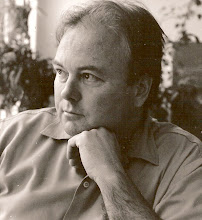I was surprised last year
when flyers appeared offering signups for a proposed “Art Club” here at
Okaloosa C.I., near Crestview,
Florida, in the Panhandle. Since
creating art is up there near the top of the list of my passions, I signed up.
Months went by. Eventually
fifteen prisoners were invited to the first meeting of the Art Club, which
consisted of the transition teacher sponsoring the gathering, and a plastic box
of donated art supplies – a drawing pad, colored pencils, lead pencils, two
pencil sharpeners, and some ballpoint pens. Although I prefer painting with
acrylics, watercolors, and pastels on canvas, I couldn’t pass up the
opportunity. It had been too long.
Years ago most Florida prisons
sponsored vibrant arts and crafts programs. At Tomoka C.I., in Daytona Beach, the Wellness Department
supervised dozens of prisoners ardently working on leathercraft, woodwork, and
a wide range of art. Not only did the arts and crafts work consume hours of
otherwise idle and unproductive time, raising the spirits and self-esteem of
those involved, but also hobbycraft sales provided money for prison essentials
that might have been earned through illegal activities, without the program.
Time went by. Every year
several dozen prisoners spent months making Christmas gifts for the U.S. Marine
Corps “Toys for Tots” program, at their own expense. Other prisoners painted
murals on expanses of blank walls in the visiting park. Many men proudly
created gifts for their children, wives, family and friends. When people are
imprisoned, caged, dependent on kindnesses from their loved ones to meet basic
needs, being able to give back to those who stand by them is a wonderful thing.
How many times have I seen faces light up in love and joy in the visiting park
when fathers presented gifts that they made with their own hands to their
children? I can’t count them. I painted dozens of works for chapel programs,
which meant a lot to me, and painted works for family, friends, charity and
sale.
Then a new sheriff came to
town. New prison administrators with repressive, harsh, “lock ‘em up and throw
away the keys” mentalities took over. The Wellness Department was disbanded and
the arts and crafts building was “temporarily closed.” I inquired over and over
again. When I finally became exasperated and asked the former “coach” for
permission to go into the locked hobbycraft building where all my materials and
artworks were stored to send them home, he admitted to me, “Norman, they’ve been pilfering all that stuff
since day one. There’s nothing left.”
During the five years at
Tomoka I had accumulated over $1000 in brushes, paints, canvases, and other
materials that I used for my own works, and in the art classes I taught,
including several completed paintings and several “in-progress” works. All
gone, stolen by guards. In the two years following the shut-down, the
repressive regime changed Tomoka from a positive place that prisoners strived
to get sent to, to a negative, violent place filled with drugs, illegal cell
phones, and gang activities. Both a prisoner and a female correctional officer
were brutally murdered within a month of each other. The administrators were
sacrificed, demoted, and replaced by worse ones.
I’m not saying that all
those terrible things that befell Tomoka C.I. occurred because they shut down
the arts program and stole the prisoners’ property, creating unrest and
animosity that spread, but those actions were symptomatic of the environment
that resulted from the harsh negativity of the people in charge of the prison.
Back to Crestview. After
not being able to create any artwork for several years, I jumped into it
quickly and completed a series of portraits over a few months. Limited class
hours slowed my progress and production. I learned years ago that if you can
draw or paint portraits of people, you can do most anything. My friends, Dan
and Stephanie in Washington
State, sent me a photo of
their grandson, Aiden, which resulted in the colored pencil drawing below. I
completed several other portraits, mostly of celebrities, which are also below.
I began polishing neglected skills.
In the class, artistic
abilities range from beginners to advanced. Several men have discovered hidden
talents for art, and make progress every week.
Numerous studies over the
years confirm that prisoners involved in positive activities such as art,
creative writing, educational and vocational classes, not only exhibit improved
behavior in prison, but upon release to free society have a much better
likelihood of maintaining a law-abiding life and not returning to prison. I see
it every day in the Re-entry Program dormitory I live in. Senses are honed as survival
skills after years of imprisonment in a dangerous, deadly world. We can tell
which men are serious about self-improvement, which ones are striving to become
better people, who intend to get out of prison and stay out, and we can tell
which ones are playing games, the phonies who put on their smiling masks
attempting to fool the authorities with their false sincerity, who have no
intention of leading law-abiding lives.
Unfortunately, there aren’t
enough resources or opportunities to permit everyone who wants to join the art
class or other programs to do so. In the meantime, I will thank my lucky stars
for the chance to participate in activities that benefit myself and others.
Charlie
A GALLERY OF RECENT
DRAWINGS
by Charles Patrick Norman





1 comment:
Really? Ron Fleming , James Clifford, Al Black and I started the Art Project at Tomoka and ran it with Coaches Cooney, Martucelli and Battaglino until it closed, and the building became caustic supply space. I do not only fail to recall you ever teaching, I can't say I even remember you being involved. A lot of hard work endless beg letters and harassment went into getting it going. You should be more careful about what you "CLAIM" to have done.
Post a Comment